Complete Solutions to Exercise 2.2 of chapter WAVE OPTICS of Class 12 book with complete answers and questions
| Class 12 | PHYSICS |
| Chapter | WAVE OPTICS |
| CENGAGE PHYSICS | Exercise 2.2 |
| Number Of Questions | 22 |
| Academic Year | 2023-24 |
In Young's double slit experiment with wavelength 5890 `Å`, there are 60 fringe in the field of vision, How many fringes will be observed in the same field of vision id wavelength used is 5460 `Å`?
03:01View SolutionIn YDSE performed with wavelength `lambda = 5890 Å` the angular fringe width is `0.40^(@)`. What is the angular fringe width if the entire set-up is immersed in water?
01:59View SolutionIn YDSE for wavelength `lambda = 589nm`, the interference fringe have angular separation of `3050 xx 10^(-3)` rad. For what wavelength would the angular separation be 10.0% greater?
02:01View SolutionA beam of light consisting of wavelengths 6000 `Å` and 4500 `Å` is used in a YDSE with D = 1 m and d = 1 mm. Find the least distance from the central maxima, where bright fringes due to the two wavelengths coincide.
03:59View SolutionWhite light is used in a YDSE with `D = 1 m` and `d = 0.9 mm`. Light reaching the screen at position `y = 1 mm` us passed through a prism and its spectrum is obtained. Find the missing lines in the visible region of this spectrum.
04:14View SolutionMonichromatic lightof wavelenght 600 nm is used ina Young's double slilt experient. One of the slits is covered by a transparent sheet of thicknes `1.8xx10^-5` m made of a material of refractive index 1.6. How many fringe will shift due to the introduction of the sheet?
02:24View SolutionInterference fringes are produced by a double slit arrangement
and a piece of plane parallel glass of refractive index 1.5 is interposed in one of
the interfering beam. If the fringes are displaced through 30 fringe widths for
light of wavelength `6xx 10^(-5) cm`, find the thickness of the plate.02:08View SolutionIn YDSE with `d = 1 mm` and `D = 1 m`, Slabs of `(t = 1 mu m, mu = 3)` and `(t = 0.5mu m, mu = 2)` are introduced in front of upper and lower slits, respectively. Find the shift in the fringe pattern.
03:08View SolutionIn YDSE with `D = 1 m, d = 1 mm`, light of wavelength `500 nm` is incident at an angle of `0.57^(@)` w.r.t. the axis of symmetry of the experimental set-up. If center of symmetry of screen is O as shown figure.
a. find the position of centrla maxima,
b. find intensity at point O in terms of intensity of central maxima `I_(0)`, and
c. find number of maixma lying central maxima.
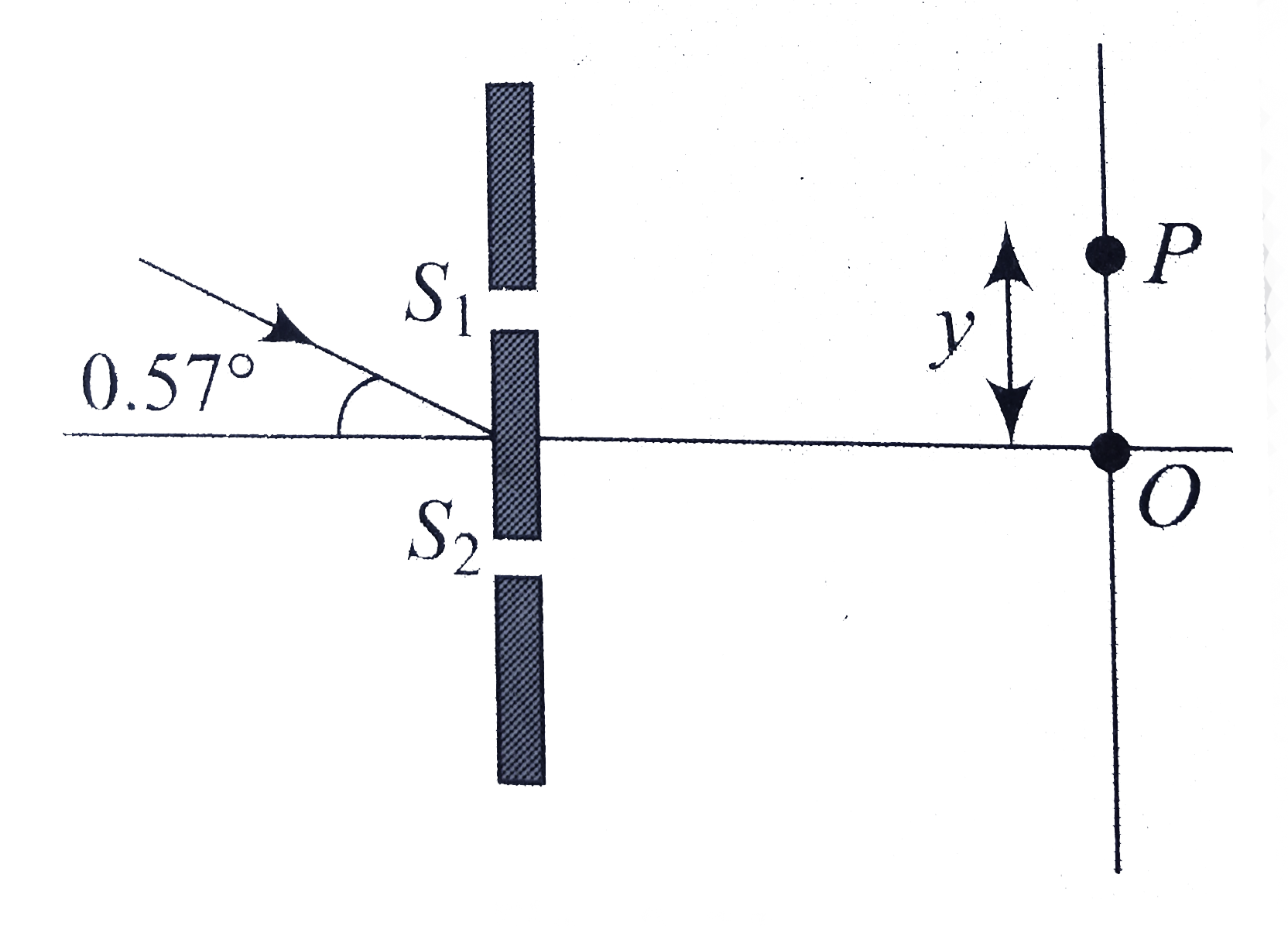 .06:49View Solution
.06:49View SolutionIn Young's experiment, find the distance between two slits that results in the third minimum for `420 nm` violet light at an angle `30^(@)`
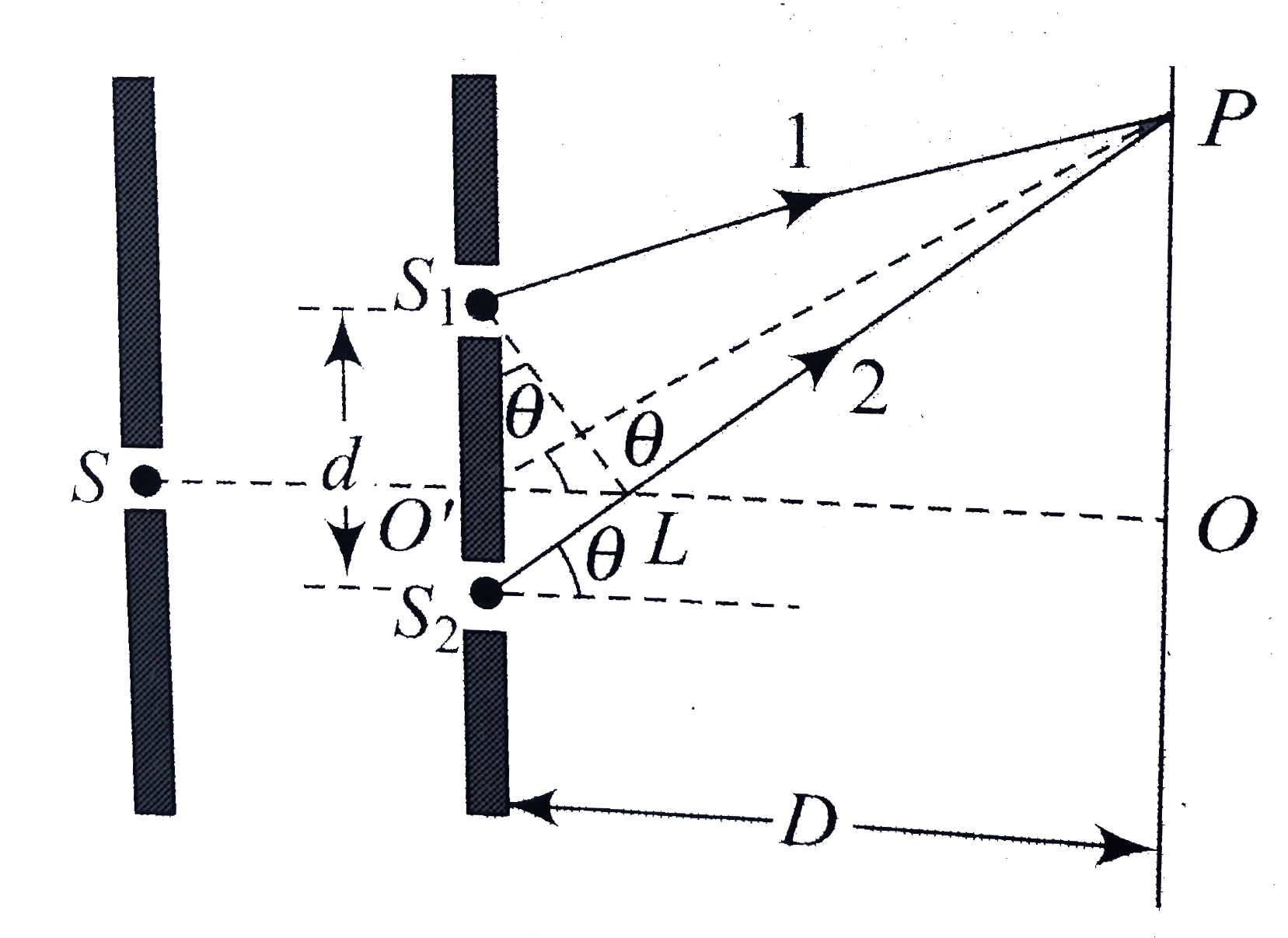 .02:14View Solution
.02:14View SolutionIn an interference arrangement similar to double-slit experiment, `S_(1)` and `S_(2)` are illuminated with coherent source microwave source each of frequency 1 MHz. the sources are synchronized to have zero phase difference . This slits are separated by distance `d = 150.0m` The intensity `I (theta)` is measured as a funciton of `theta`, where `theta` is defined as shown in figure. If `I_(0)` is maximum intensity, calculate `I (theta)`
For :
a. `theta = 0` b. `theta = 30^(@)`
c. `theta = 90^(@)`
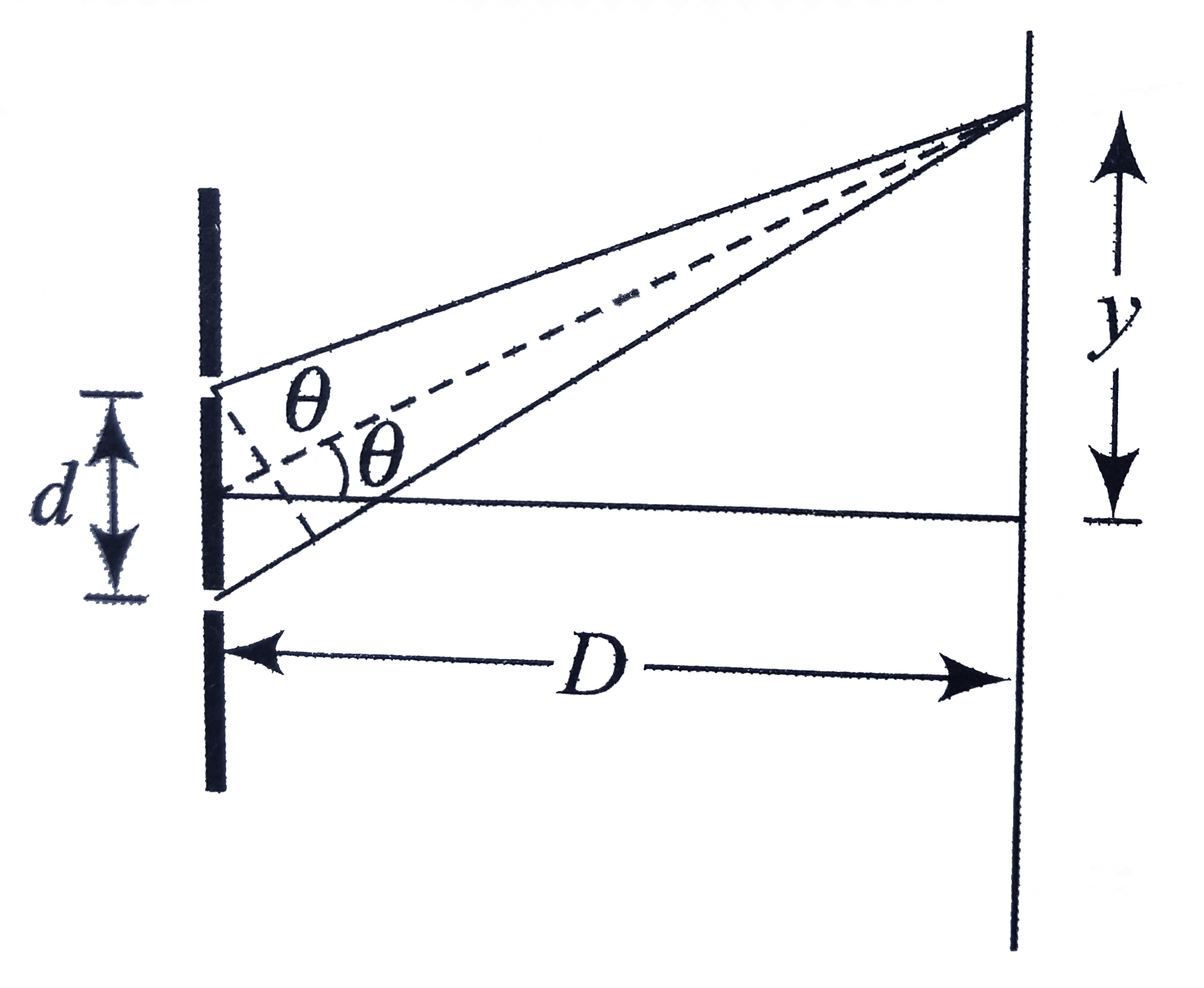 04:37View Solution
04:37View SolutionIf Young's double-slit experiment is performed under water, how would be observed interference pattern be affected ?
01:24View SolutionIn Young's double -slit experiment, why do we use mono chromatic light ? If while light is used, how would the pattern change ?
02:02View SolutionYoung's interference experiment is performed with monochromatic light. The separation between the slits is 0.500 mm, and the interference pattern on a screen 3.30 m away shows the first side maximum 3.40 mm form the center of the pattern. What is the wavelength ?
01:58View SolutionTwo radio antennas separated by 300 m as shown in figure simultaneously broadcast indentical singals at the same wavelength. A radio in a car traveling due north receives the signals. (a) If the car is at the position of the second maximum, what is the wavelength of the signals? (b) How much farther must the car travel to encounter the next mininum in reception? (Note: Do not use the small- angle approximation in this problem.)
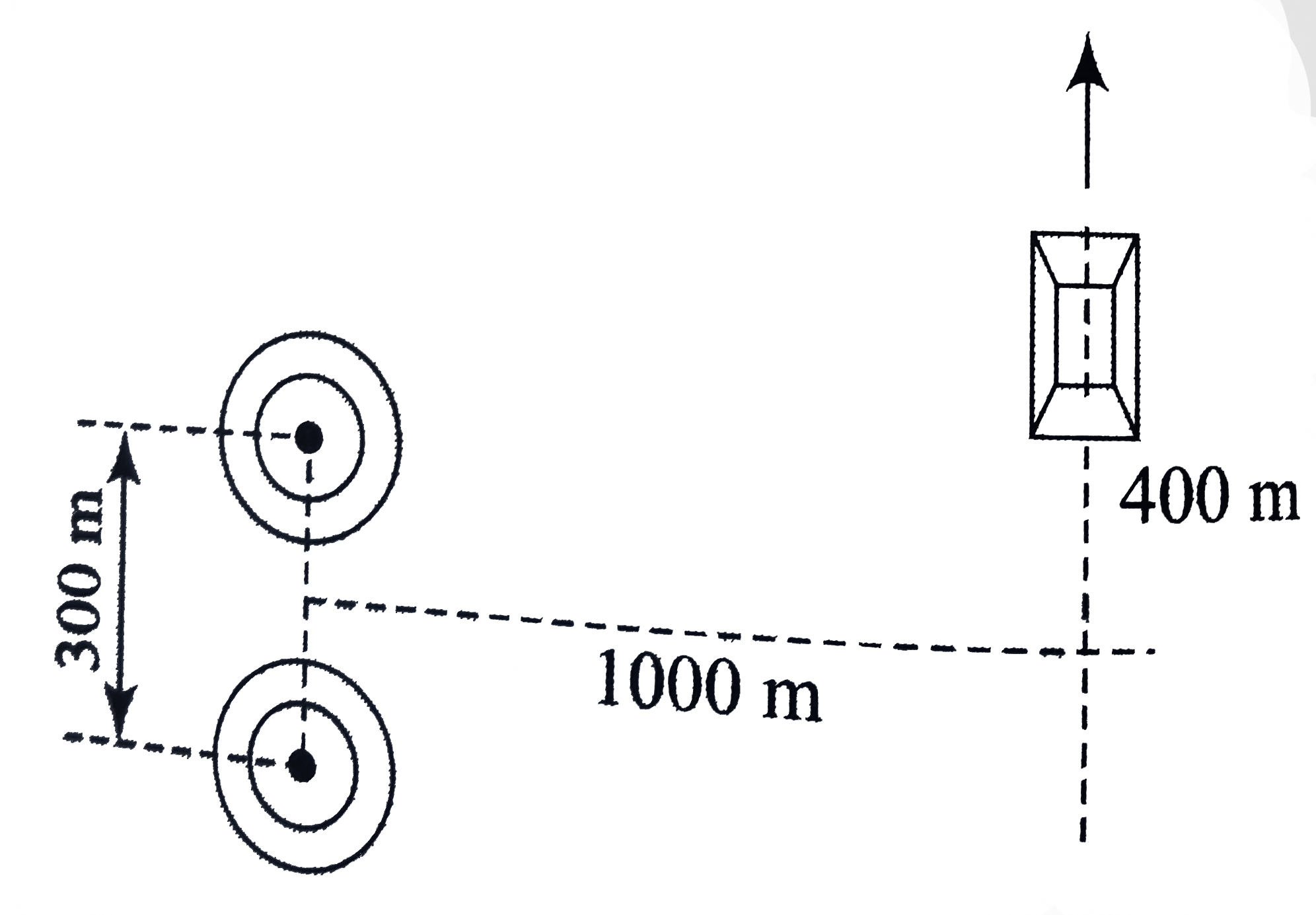 05:45View Solution
05:45View SolutionYoung's double -slit experiment is performed with a 600 nm light and a distance of 2.00 m between the slits and the screen. The tenth interference minimum is observed 7.5 ,, from the central maximum . Determine the spacing of the slits.
03:12View SolutionTwo slits are separated by 0.320 mm. A beam of 500 nm light strikes the slits, producing an interference pattern. Determine the number of maxima observed in the angular range `- 30.0^(@) lt theta lt 30.0^(@)`.
03:40View SolutionThe intensity on the screen at a certain point in a double-slit interference patteren is 25.0% of the maximum value. (a) What minimum phase difference (in radians) between the sources produces this result? (b) Express this phase difference as a path difference for 486.1 nm light.
02:13View SolutionDistance between the slit shown in figure is `d = 20 lambda`, where `lambda` is the wavelength of light used. Find the angle `theta` where
a. central maxima (where path difference is zero) is obtained, and
b. third-order maxima is obtained.
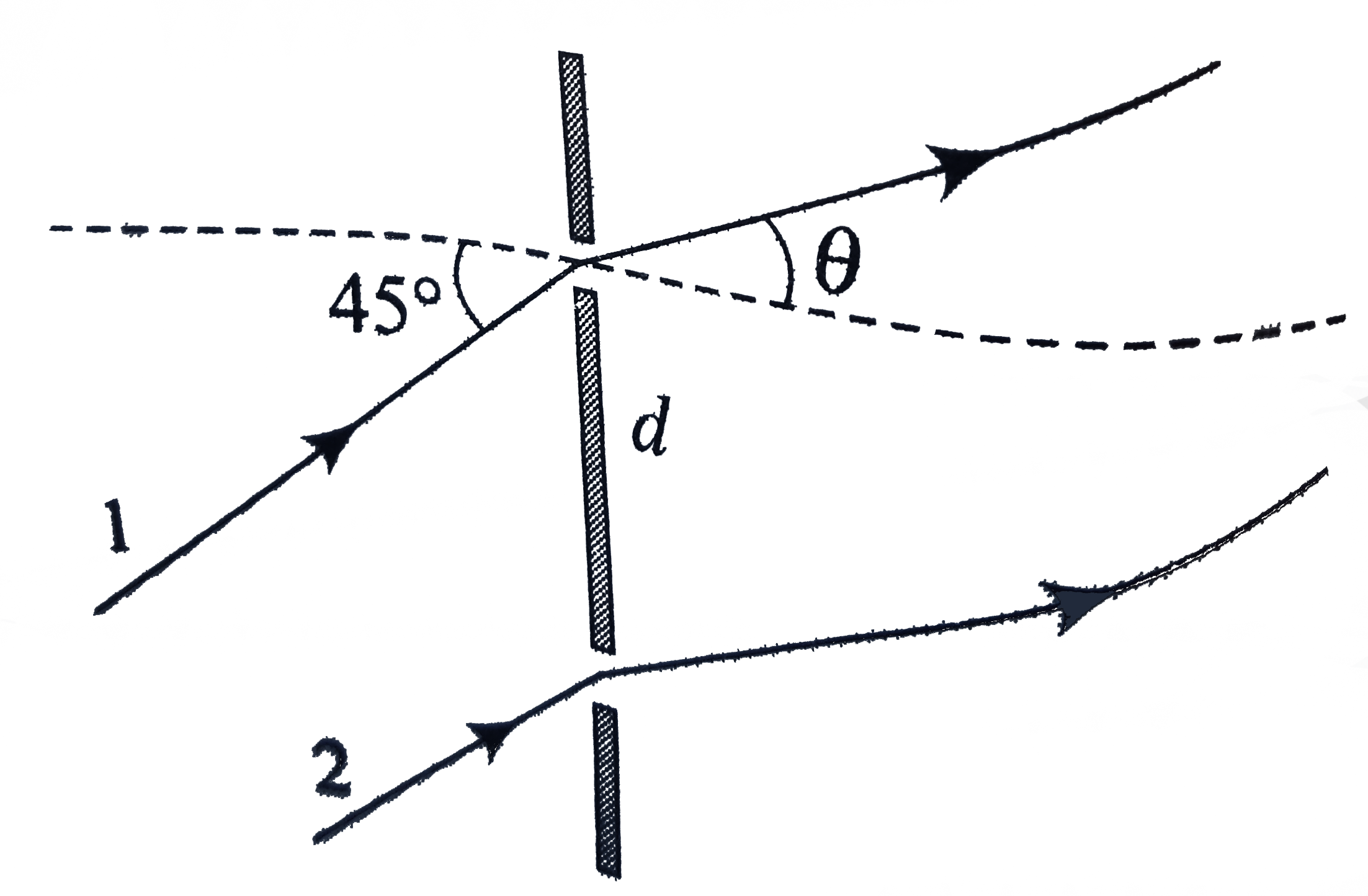 02:32View Solution
02:32View SolutionThe intensity of the light coming from one of the slits in a Young's double slit experiment is double the intensity from the other slit. Find the ratio of the maximum intensity to the minimum intensity in the interference fringe pattern observed.
05:17View SolutionThe width of one of the two slits in a Young's double slit experiment is double of the other slit. Assuming that the amplitude of the light coming from a slit is proportional to the slit width, find the ratio of the maximum to the minimum intensity in the interference pattern.
02:27View SolutionSuppose that one of the slit in Young's experiment is wider than the order, so the amplitude of the light reaching the central part of the screen from one slit, acting alone, is twice that from the other slit, acting alone. Obtain an expression for the light intensity I at the screen as a function or `theta` the angular position.
05:36View Solution
Exercise 2.2 questions and complete solutions for chapter WAVE OPTICS of CENGAGE PHYSICS (HINGLISH) of Class 12
